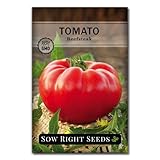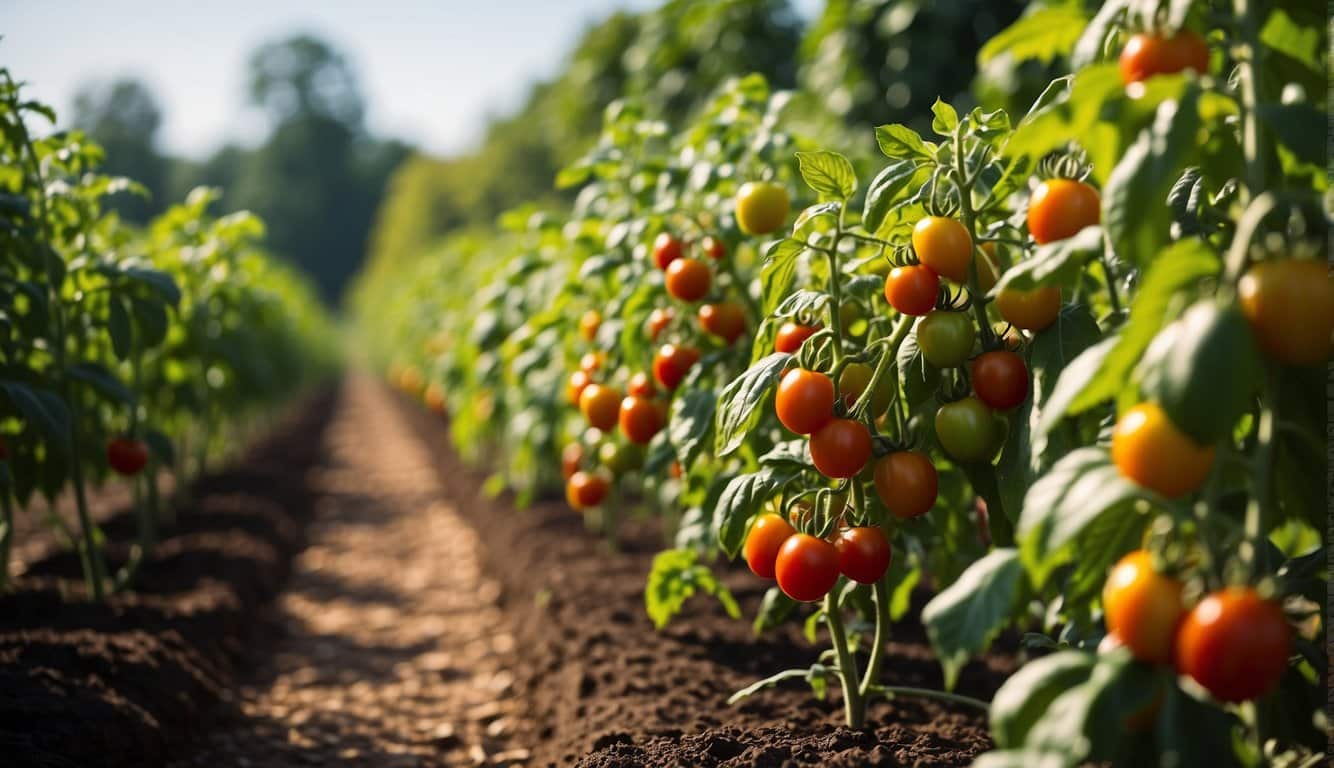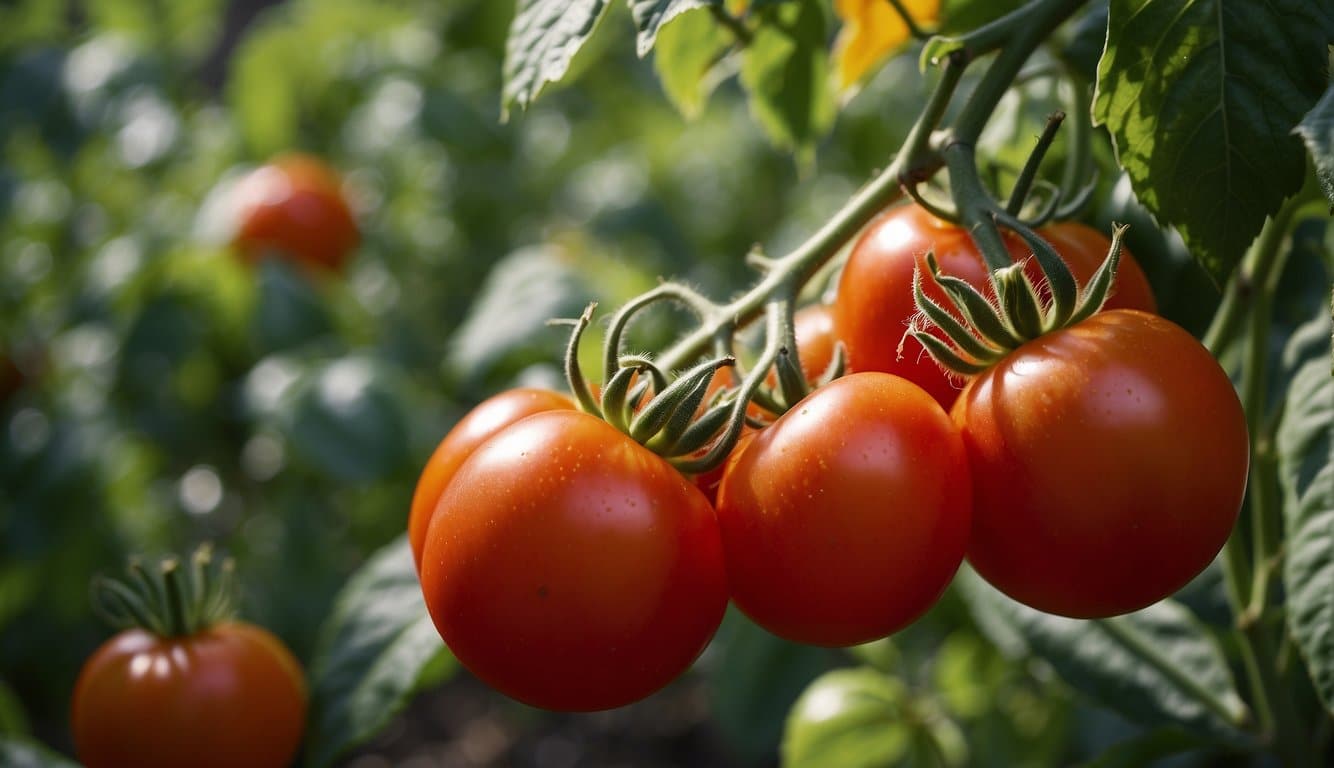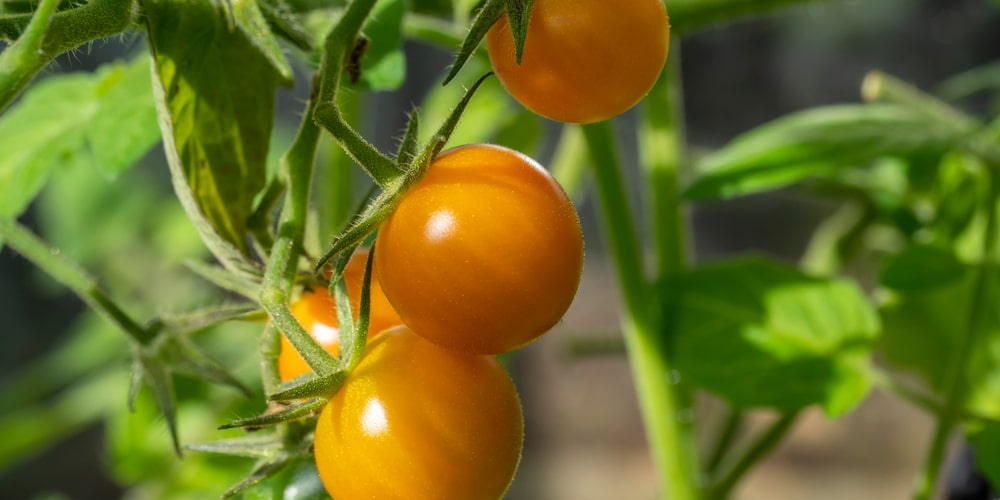| Question | What’s the best time of year to plant tomatoes in Georgia? |
|---|---|
| Answer | After the last frost in spring and late summer for fall harvest. |
| More Info |
|
Georgia offers a unique combination of climate and soil that can be very conducive to growing tomatoes, making it a popular pastime for gardeners throughout the state. With its warm summers and generally mild spring and fall seasons, there is a broad window for planting and harvesting this versatile fruit.
However, timing is critical, as a well-planned calendar ensures a bountiful crop. Gardeners in Georgia typically aim to plant their tomatoes after the last frost of the season, which varies depending on the specific region but generally occurs around March.
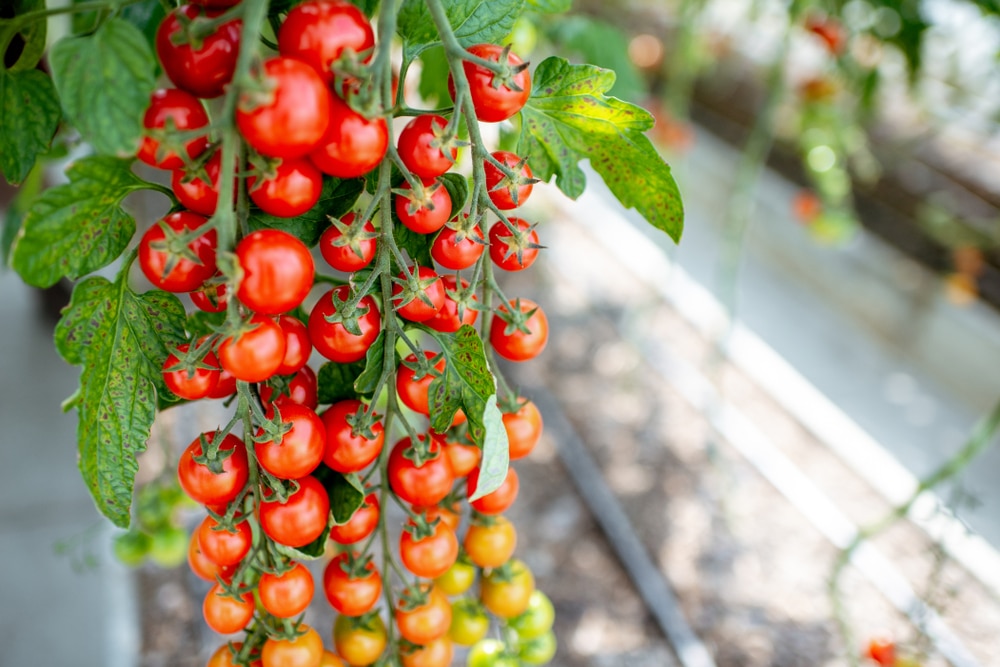
Selecting the right tomato varieties to plant is equally important, considering Georgia’s hot and humid climate.
While many types of tomatoes can thrive in this environment, some are specifically bred to withstand the heat and still produce a quality yield.
Popular varieties such as ‘Heatmaster’ and ‘Solar Fire’ are known for their ability to perform well in the warmer temperatures that characterize Georgian summers.
In addition to choosing heat-tolerant varieties, successful cultivation also hinges on preparing the soil correctly with plenty of organic matter and keeping the pH level between 6.2 and 6.8, which tomatoes favor for optimal growth.
Key Takeaways
- Timing for planting tomatoes in Georgia is crucial, favoring post-last frost periods, typically around March.
- Heat-tolerant tomato varieties such as ‘Heatmaster’ and ‘Solar Fire’ are well-suited for Georgia’s warm climate.
- Proper soil preparation, enriched with organic matter and maintaining the correct pH level, is vital for tomato growth.
Climate and When to Start Tomatoes
In Georgia, successful tomato cultivation is deeply intertwined with an understanding of the region’s unique climate patterns. This section will explore the specific temperature ranges and precipitation factors vital for growers to consider.
Temperature Ranges and Seasonal Impacts
Georgia experiences a variety of temperature ranges throughout the year, influencing the ideal timing for planting tomatoes.
In general, tomato plants thrive when soil temperatures reach between 60 and 65 degrees Fahrenheit. These conditions typically occur:
- In Northern Georgia after the last frost, late April to early May.
- In Southern Georgia, growers have the advantage of an earlier planting window, often starting in mid-March.
It is imperative that planting is delayed until after the last spring frost to prevent damage to the tomato plants.
Precipitation and Humidity Factors
The humidity and rainfall in Georgia can vary, impacting tomato growth in several ways.
- Northern Georgia usually experiences moderate rainfall, while Southern Georgia sees more intense precipitation patterns.
- Growers need to ensure adequate drainage and spacing between plants to counteract the risks of diseases influenced by high humidity levels.
By paying careful attention to local weather forecasts and historical climate data, gardeners can optimize their tomato planting schedules accordingly, mitigating the adverse effects of unexpected weather fluctuations.
Selection of Tomato Varieties
When choosing tomato varieties to grow in Georgia, gardeners should consider the differences between hybrid and heirloom tomatoes, as well as the best timing for each type, making sure to select early, midseason, or late varieties to suit the climate and desired harvest time.
Hybrid vs Heirloom Tomatoes
Hybrid tomatoes are a product of controlled cross-pollination between two different parent plants. They are bred for their vigor, disease resistance, and higher yield.
In Georgia, hybrids like ‘Big Boy’ — known for its disease resistance and beefy fruits — thrive due to the region’s humid conditions which can foster diseases.
On the other hand, heirloom tomatoes are open-pollinated varieties that have a lineage of being passed down for generations. They offer a wider range of flavors and textures but can be less disease resistant than their hybrid counterparts.
Popular heirlooms in Georgia include ‘Sungold’, noted for its sweet cherry tomatoes, and ‘Beauty King’, prized for its bi-color flesh and rich taste.
Early, Midseason, and Late Varieties
- Early Varieties: These tend to mature quickly, within 50 to 60 days from planting. They are ideal for gardeners who are eager to harvest tomatoes as soon as the summer begins. ‘Early Girl’ is an excellent choice known for its early yield.
- Midseason Varieties: Typically, these take 60 to 80 days to reach maturity and offer a continuous supply throughout the peak summer months. ‘San Marzano’ is a midseason variety that flourishes in Georgia’s long, warm summers, yielding rich, flavorful fruit ideal for sauces and canning.
- Late Varieties: These are suitable for areas with a longer growing season as they mature in 80 days or more. Late varieties, such as ‘Green Zebra’, can extend the harvesting period into early fall with proper care and are known for their unique color and tangy flavor.
Optimal Planting Times
Planting tomatoes at the right time is crucial for a fruitful harvest in Georgia. The state’s climate allows for two main planting windows which gardeners can take advantage of.
Spring Planting Guide
In Georgia, spring planting should begin after the danger of the last frost has passed. This typically falls around March.
Tomato plants thrive when the evening temperatures stay consistently above 50°F, and soil temperatures reach about 60°F.
- North Georgia: Plant from late March to early April.
- Central Georgia: Best to plant from mid to late March.
- South Georgia: Optimal planting can begin in early March.
Gardeners may refer to local frost date estimates and soil temperature readings to determine the precise timing for planting.
Fall Harvest Planning
For a successful fall harvest of tomatoes, gardeners must plan backward from the first expected fall frost. They should plant at least 85 to 100 days before this date to allow tomatoes to mature.
- North Georgia: Plant by mid-July.
- Central Georgia: Plant by late July.
- South Georgia: The window extends to the beginning of August.
By targeting these specific time frames, one ensures that tomato plants have sufficient time to grow and yield a healthy crop before the season’s temperatures become too cold for fruition.
Soil Preparation and Maintenance
Proper soil preparation and ongoing maintenance are crucial for the success of tomato crops in Georgia’s diverse climate. These practices ensure that the plants have the best environment for root growth and fruit production.
Soil Composition and pH Levels
The ideal soil for tomato plants is loamy and well-draining with a pH level ranging from 6.0 to 7.0, which is slightly acidic.
Gardeners should conduct a soil test to determine the current pH and make adjustments if needed. To raise the pH, one can add lime; to lower it, sulfur can be used.
The soil should be loosened to a depth of at least 12 inches to accommodate the roots and improve aeration.
Fertilization and Mulching Practices
Tomatoes require regular fertilization to provide the necessary nutrients for growth.
A balanced 10-10-10 fertilizer is commonly recommended, with application rates following the product’s instructions.
In Georgia, the use of mulch is beneficial for temperature and moisture control.
Organic mulch, such as straw or wood chips, should be applied to a depth of 2 to 3 inches after planting. It helps to conserve water, reduce weed growth, and maintain an even soil temperature.
Frequently Asked Questions
Gardeners in Georgia can look forward to a successful harvest with the right timing and selection of tomato varieties tailor-made for the local climate and soil conditions.
What are the optimal months for planting tomatoes in Georgia?
In Georgia, gardeners should plant tomatoes after the last frost, typically from mid-April to early May. This window ensures the soil has warmed enough for tomato plants to thrive.
Which tomato varieties are most suitable for growth in Georgia’s climate?
Varieties such as ‘Celebrity’, ‘Big Boy’, ‘Better Boy’, ‘Mountain Pride’, and ‘Park’s Whopper’ are known to flourish in Georgia’s climate, providing a balance of disease resistance and heat tolerance.
How long is the growing season for tomatoes in Georgia?
The growing season for tomatoes in Georgia typically extends from late spring through summer, with some varieties continuing into early fall, offering gardeners a long harvest period.
Which tomato varieties yield the largest fruit suitable for Georgia gardens?
‘Beefsteak’, ‘Beefmaster’, and the ‘Brandywine’ tomatoes are popular for producing large, flavorful fruits that adapt well to Georgia’s warm garden conditions.
What is the ideal timeframe to start tomato seeds indoors in Georgia?
Gardeners in Georgia should start their tomato seeds indoors about six to eight weeks before the last expected frost date to have robust seedlings ready for transplanting in spring.
What are the recommended tomato varieties for high heat and humidity in the South?
Tomato varieties such as ‘Heatwave II’, ‘Solar Fire’, ‘Phoenix’, and ‘Florida 91’ are specifically bred to perform well under the high heat and humidity typical of Georgia summers.
Last update on 2025-04-22 / Affiliate links / Images from Amazon Product Advertising API
